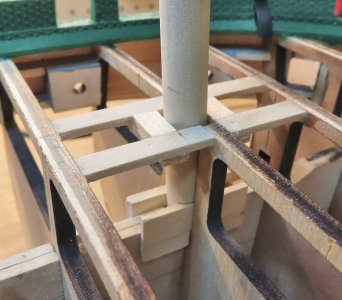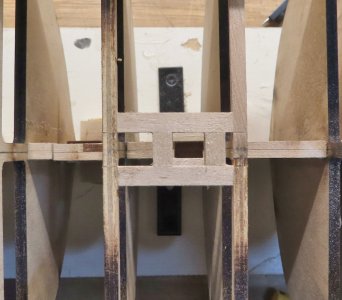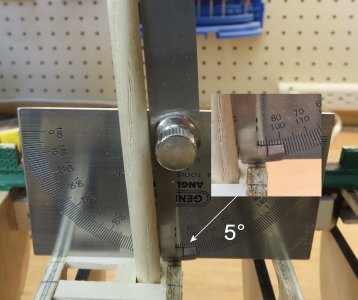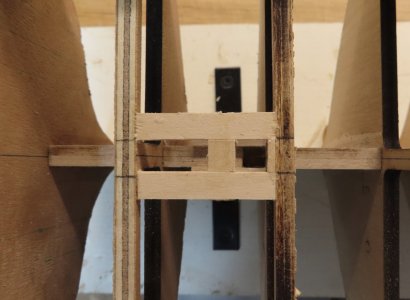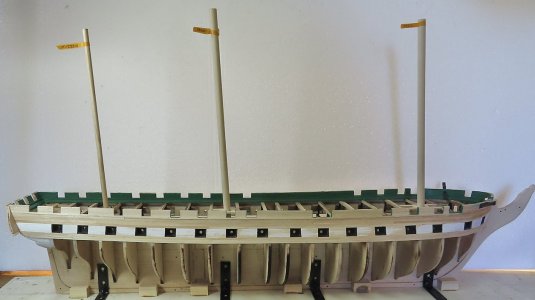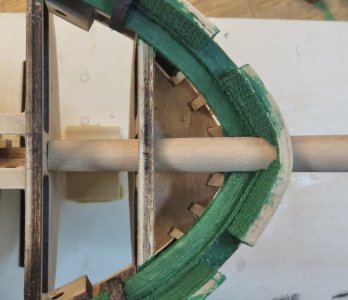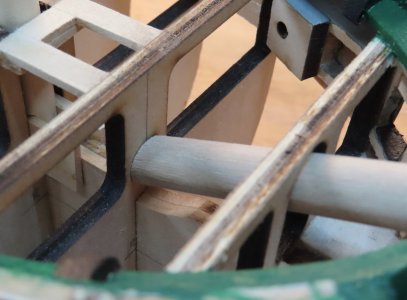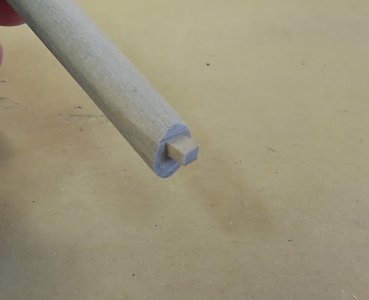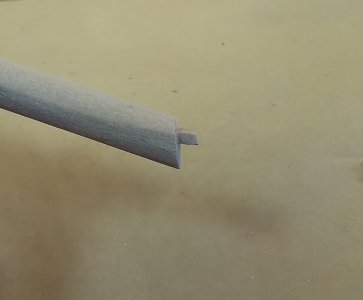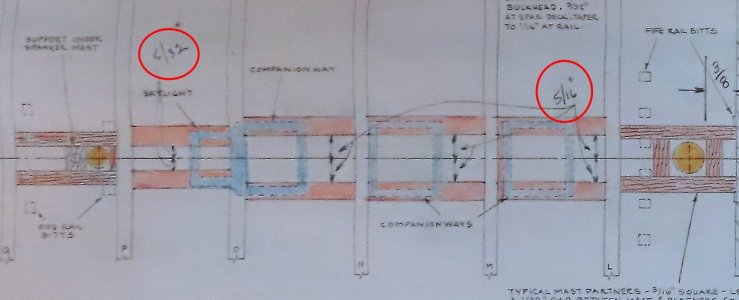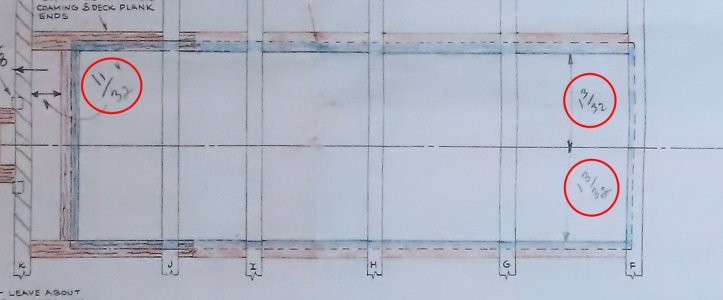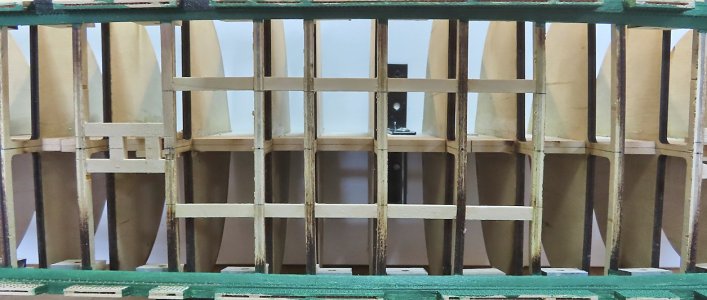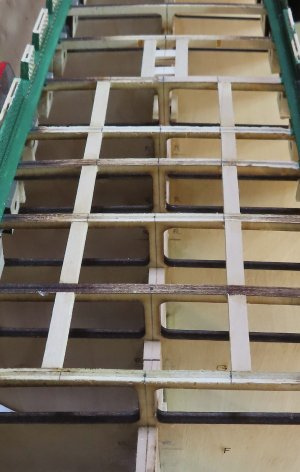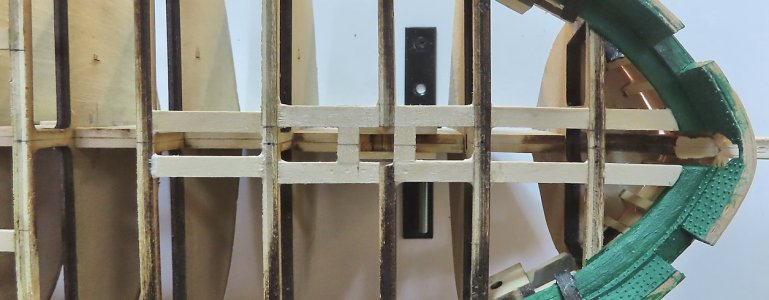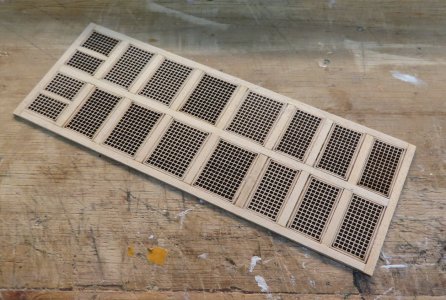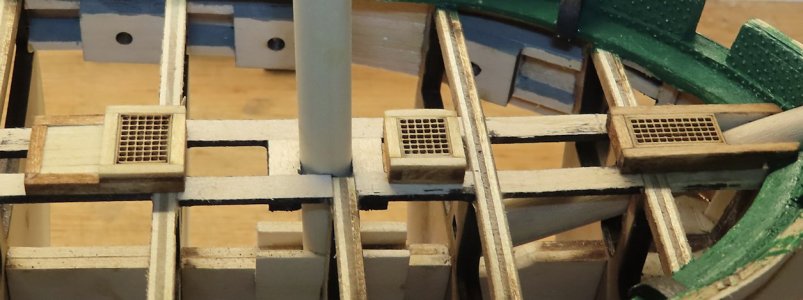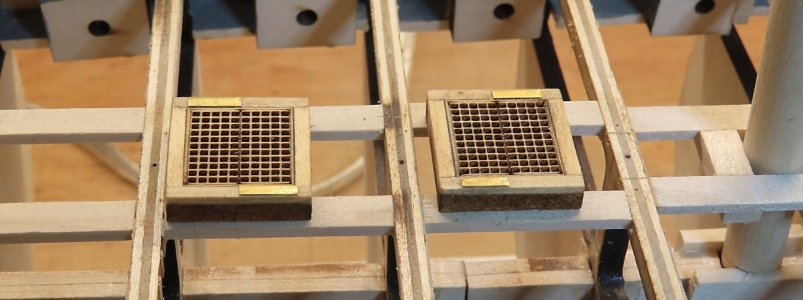With the layer of paint the rivets looks great, Donnie.Mixing up my own paint. Combo of green and white. I can give the details later on the mix.
So, I am almost finished with the rivets, but I could not resist doing some painting. Ok, so the black inboard sides of the Gun Ports are "simulated" black using a graphic program only to show the "contrast' that will be present when painting those Gun Port inside walls with Black. The Hull Black actually wraps around INTO the sides of the Gun Ports. The Green is ONLY for the Bulwark facing inside.
In case you are wondering, the Deck Planking Strips that lay right beside the Waterways will be painted "before" they are glued down. Then the remaining Deck Planking can be laid down without painting until later. I am trying to decide if I want to do nibbing or not. Never done it before. I do not want to mess that up.
Also, to me personally, I did not sand the Bulwarks glass smooth as this is not reality as we all know that over the years and time, planks have been replaced and if you look at the real ship, it is not going to be glass smooth, but you will see imperfections. If it were sanded glass smooth, then you would loose alot of the texture of each plank butted up against the other.
Regards from another riveter, Peter






